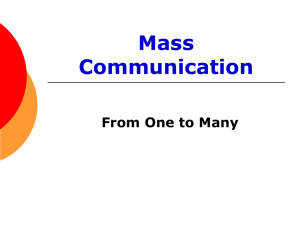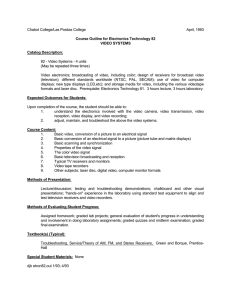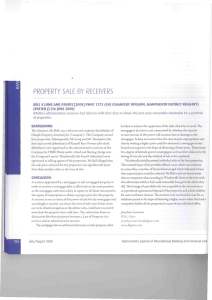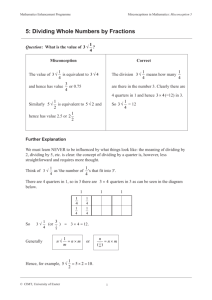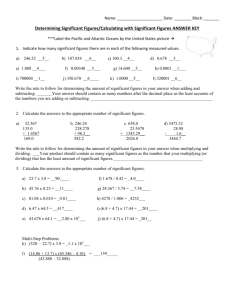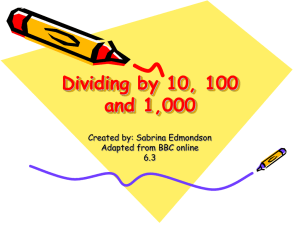Dividing with Fractions
advertisement
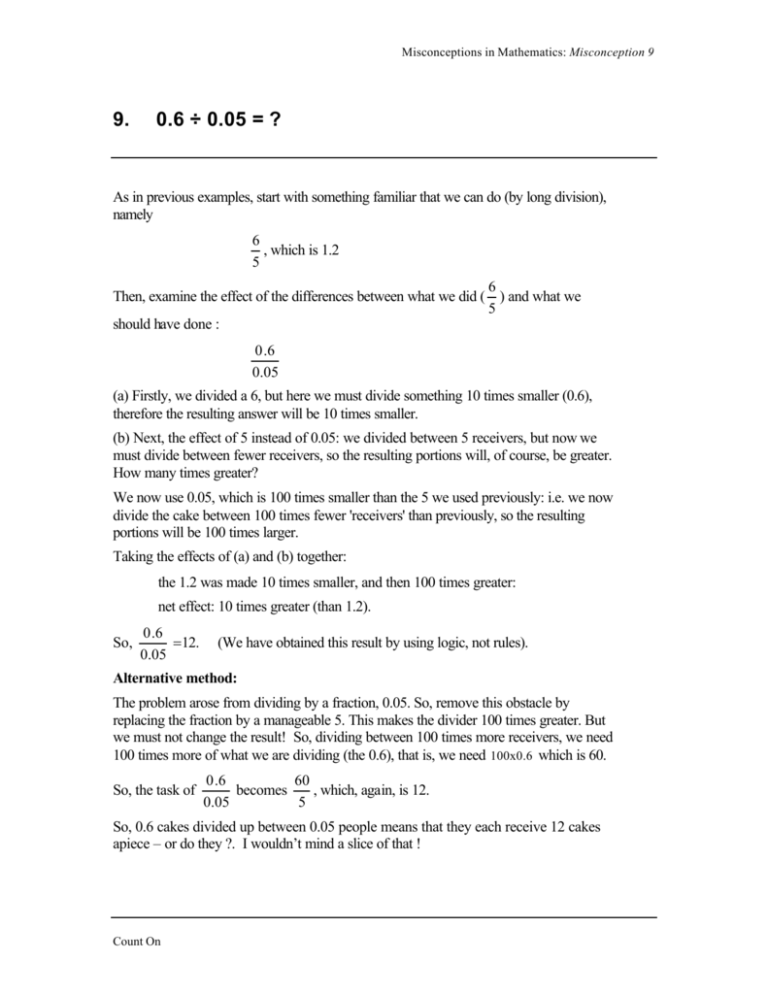
Misconceptions in Mathematics: Misconception 9 9. 0.6 ÷ 0.05 = ? As in previous examples, start with something familiar that we can do (by long division), namely 6 , which is 1.2 5 6 Then, examine the effect of the differences between what we did ( ) and what we 5 should have done : 0 .6 0.05 (a) Firstly, we divided a 6, but here we must divide something 10 times smaller (0.6), therefore the resulting answer will be 10 times smaller. (b) Next, the effect of 5 instead of 0.05: we divided between 5 receivers, but now we must divide between fewer receivers, so the resulting portions will, of course, be greater. How many times greater? We now use 0.05, which is 100 times smaller than the 5 we used previously: i.e. we now divide the cake between 100 times fewer 'receivers' than previously, so the resulting portions will be 100 times larger. Taking the effects of (a) and (b) together: the 1.2 was made 10 times smaller, and then 100 times greater: net effect: 10 times greater (than 1.2). So, 0 .6 =12. 0.05 (We have obtained this result by using logic, not rules). Alternative method: The problem arose from dividing by a fraction, 0.05. So, remove this obstacle by replacing the fraction by a manageable 5. This makes the divider 100 times greater. But we must not change the result! So, dividing between 100 times more receivers, we need 100 times more of what we are dividing (the 0.6), that is, we need 100x0.6 which is 60. So, the task of 0 .6 60 becomes , which, again, is 12. 0.05 5 So, 0.6 cakes divided up between 0.05 people means that they each receive 12 cakes apiece – or do they ?. I wouldn’t mind a slice of that ! Count On


